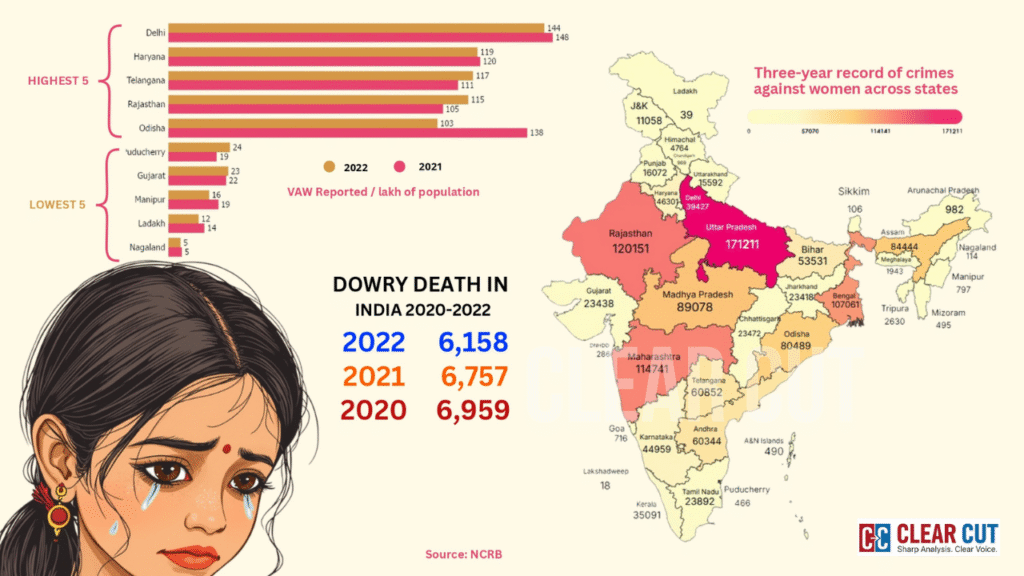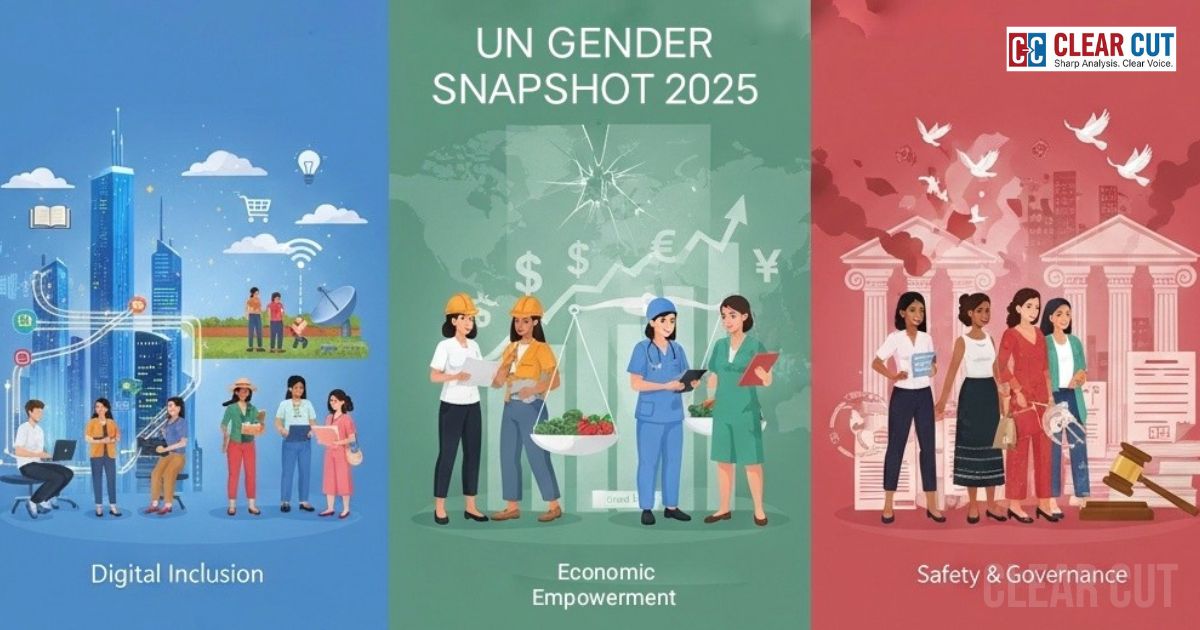Photo Credit: Parinita Mathur
Clear Cut Gender Desk
New Delhi, UPDATED: Aug 29, 2025 10:09 IST
Written By: Paresh Kumar
How Dowry Deaths Forewarn a Nation’s Collapse
The recent news of a young married woman’s death in Greater Noida has shocked many. While counter-theories suggest that it may have been a suicide rather than a dowry killing, the public outrage reflected how such tragedies resonate in a country where violence against women, particularly within families, remains a grim reality. Intimate partner violence, dowry-related harassment, and emotional abuse are not aberrations; they are part of a deeply under-reported and systemic pattern of how we treat women.
The Rising Arc of Crimes Against Women
Crimes against women in India are not just increasing in volume; they are becoming sharper in form. The numbers confirm what lived realities already suggest. In 2022, the country recorded 4,57, 090 cases, a 6.6% rise from the previous year (NCRB 2022). The rate of registered cases stood at 66.4 per 100,000 women, up from 58.8 in 2018 (NCRB 2022).

Photo Credit: Veerasudalai G
But behind these national averages lie stark regional contrasts. Delhi reported a staggering 144.4 cases per 100,000 women, while Nagaland reported only five (NCRB 2022). Other hotspots include Haryana (118.7), Telangana (117), Rajasthan (115.1), and Odisha (103.3) (NCRB 2022). The geography of violence tells us something crucial: safety is profoundly unequal, depending on where a woman happens to live.
Dowry Deaths: A Persistent Stain
Among the many categories of violence, dowry deaths continue to stand out for their sheer cruelty. In 2022, there were 6,158 such deaths reported in India (NCRB 2022). Uttar Pradesh alone accounted for more than 2,100, nearly a third of the national total (NCRB 2022). Together, Uttar Pradesh, Bihar, Jharkhand, Madhya Pradesh, Odisha, Rajasthan, and Haryana made up 80% of all dowry deaths (NCRB 2022).
The story here is not only about the numbers but about what they imply. Every dowry death is the culmination of months or years of coercion, abuse, and extortion within the walls of what should be a safe space—the family home.
Other Crimes: Cruelty, Abductions, and Rape
The most prevalent crime against women remains “cruelty by husband or his relatives,” which accounted for 31.4% of all cases in 2022 (NCRB 2022). Kidnapping and abduction followed at 19.2%, assault with intent to outrage modesty at 18.7%, and rape at 7.1% (NCRB 2022).
In absolute terms, India recorded 31,516 rape cases in 2022—an average of 86 each day. This was a 20% increase over the previous year (NCRB 2022). Yet conviction rates remain stubbornly low, stuck at around 27–28% despite legal reforms and the creation of fast-track courts (NCRB 2022).
Justice Deferred, Justice Denied
The criminal justice system struggles to keep pace with these cases. At the end of 2022, there were 60,577 dowry death cases pending in Indian courts (NCRB 2022). Of the trials that were completed that year, only 33.2% ended in conviction (NCRB 2022).
This gap between crimes reported and justice delivered undermines faith in the law. It sends a signal to survivors and families that the system is not designed to protect them, but to outlast them.
Global Perspective
India is not alone in this crisis of domestic violence. Globally, nearly 85,000 women and girls were intentionally killed in 2023, and 60% of them were murdered by intimate partners or family members (UNODC 2023). Dowry deaths may be uniquely concentrated in South Asia, but the pattern of women being unsafe in their own homes is tragically universal.
Conclusion
The treatment of women in our homes and communities, often revered as goddesses in cultural narratives, remains marked by control, silence, and violence. In a nation that champions Beti Bachao, Beti Padhao, each such tragedy not only undermines efforts toward women’s empowerment but also exposes entrenched social attitudes that normalize suffering. This is more than a law-and-order issue; it is a mirror held up to society itself. Until we shift both our policies and our mindsets, stories like the one from Greater Noida will not remain exceptions. They will remain reminders of how far we still have to go.




